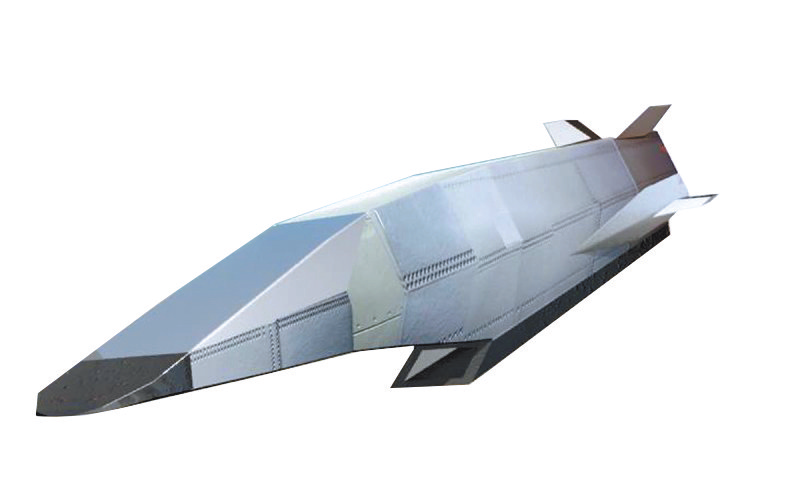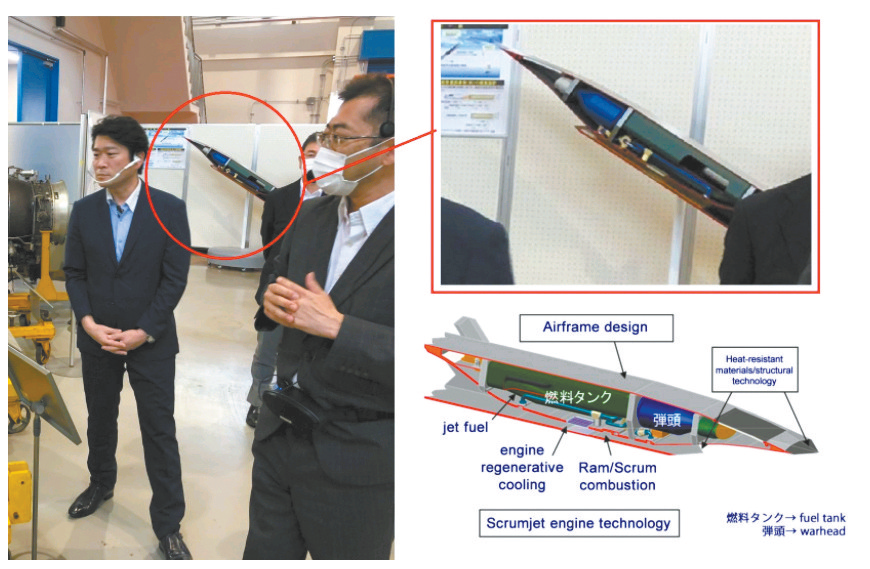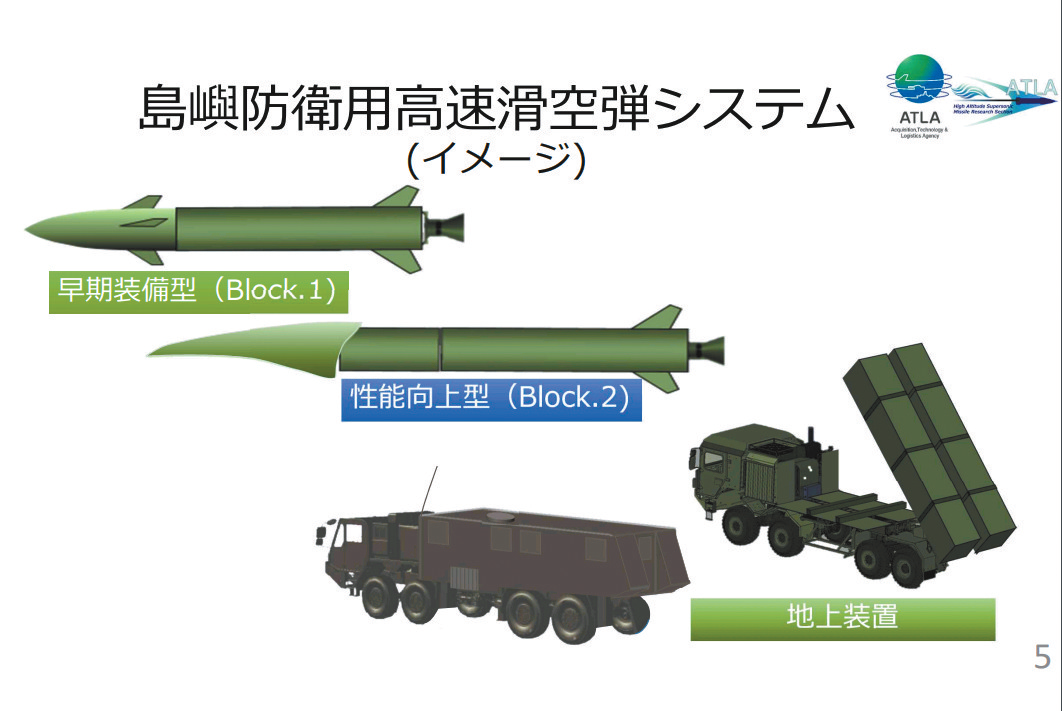Japan's hypersonic missiles have made rapid breakthroughs. Which countries are quietly helping?
Author:Global Times Time:2022.07.26
[Global Times Special Reporter Chen Shan] Japan Cosmic Aviation Research and Development Institutions (JAXA) successfully shot a small rocket that verifies super -combustion stamping engine technology on the 24th, marking that Japan has taken an important step in the field of hypersonic weapon development. Essence In recent years, Japan has invested heavily in high supersonic weapons, and its ambitious development plan points to China. So what is the current ability to develop the Japanese hypersonic missile?
Japanese technical strength ranks first in the second echelon
According to a report by Kyodo News Agency on the 24th, the Japanese Universe Airlines Research and Development Agency (JAXA) successfully launched a small rocket in the Obuctive Observation of Kyoku Sakura Akira in Kagoshima Prefecture. What is concerned about the outside world is that the rocket is mainly tested for the development speed of a heterochoor with a speed of more than five or six times the speed. And its successful launch marks an important step forward in Japan's hypersonic missile plan.

Concept map of Japanese hypersonic cruise missile
It is reported that this small rocket called "S-520-RD1" reached a height of 168 kilometers in about 3 minutes and 30 seconds after launch, and then released a 9.15-meter test equipment. The test equipment subsequently decreased at a speed of 5.5 times at a high altitude and performed a combustion test of about 6 seconds.
NHK said that this test is part of the research project commissioned by a subordinate institution in Japan. The province hopes that related technologies can be used in the field of defense in the future. The "Japan Times" is more straightforward: "Many countries are developing ultra -combustion stamping engines, which is considered to be of great significance to the development of hypersonic missiles."
Unlike the traditional rocket engine, the ultra -combustion stamping engine does not need to carry liquid oxygen. Instead, it is burned by inhaling the oxygen and fuel mixing in the air. This design can not only reduce the weight of the rocket, but also greatly increase its effective load.
The news of the development of domestic hypersonic weapons in Japan's defense province first appeared at the end of 2018. At that time, the Communist News Agency broke the news that the Ministry of Defense plans to develop hypersonic cruise missiles, and in the budget of the 2019 fiscal year, the funding for research on super -burning stamping engines is sought to cooperate with JAXA. This time, the successful test of the super -burning stamping engine independently developed in Japan has undoubtedly represents an important step on the road to developing hypersonic missiles.
In fact, the hypersonic speed cruise missile represented by the super -burning stamping engine is only one of the two technical routes in Japan's promotion of hypersonic weapons. According to the planning of the Ministry of Defense in Japan, in the future, healing of hypersonic cruise missiles (HCM) and hypersonic gliding bombs (HVGP) will be developed simultaneously. Among them, HCM is to use ultra -burning stamping engines. The "Global Security" website in the United States said that "compared with conventional missiles, HCM can maintain a higher cruise speed for a long time, thereby compressing the opponent's reaction time. At the same time, its volume and size Smaller, can be carried by air platforms such as tactical aircraft. " Globally, this type of missile currently has only the "vermiculite" missiles of the Russian army. The United States has also conducted a test of the hypersonic cruise missile not long ago.
HVGP is more similar to the development of the hypersonic boom that Russia, China and the United States are developing-gliding weapons, with many advantages such as fast flight speed, strong penetration capabilities, and high blow accuracy. It first uses the ground to use the booming rocket to launch. The warhead part is separated from the upper layer of the atmosphere with smaller air resistance, and then it is used at the atmosphere to glide and mobilizes or rails to avoid interception. The R & D plan is divided into two stages. The first stage is the early equipment type. The warhead uses a conical pneumatic structure, and the small rear wing is installed to adjust the flight trajectory. It is planned to serve by 2026. The second stage is the performance upgrade type. Speed and range will be further improved, and more complex motor orbit can be performed, which is expected to be put into use in the early 1930s.

Yamamoto Maki inspected the photos of the Japanese hypersonic missile in the photo.
In addition, the Japanese hypersonic missile will also use different warheads for maritime and land targets. According to the plan announced by the Ministry of Defense, when cracking down on maritime targets, she will use armor -piercing warheads, "designed for penetrating the aircraft carrier flying deck." At the 2019 Japan's first "Defense and Safety Equipment International Expo", the Japanese side also demonstrated the "hypersonic speed glide" prototype and used analog animation to demonstrate its process of hitting aircraft carriers. When hitting the ground, it will choose a high explosion warhead for regional suppression. The Ministry of Defense revealed that in the future, these two hypersonic missiles will be guided using satellite navigation systems, and the inertial navigation system will be used as a backup. It is worth noting that Japan is establishing a local navigation network composed of 7 satellites to provide continuous positioning for the Self -Defense Force, which will enable Japan to provide continuous navigation data without relying on foreign satellites.
The Institute of Sweden's Security and Development Policy Research stated that the development of hypersonic missiles is very difficult. At present, only a few countries have participated in the "competition". Among them, Russia, China and the United States are located in the first echelon, and Australia, India, Japan and Europe are located in the second echelon. However, from the perspective of technical strength and actual development, Japan ranks first in the second echelon.
Which countries are quietly helping Japan
Why can Japan quickly promote the progress of the development of hypersonic weapons? The United States "Defense News" said that Japan has been developing and technical reserves in various fields related to hypersonic weapons for many years, including other related fields such as satellite navigation technology and solid fuel rockets. However, the report acknowledged that in the fields of hypersonic guidance systems, warheads and missiles, and thermal shielding of the missile body, and the hypersonic promotion system, Japan still has a long way to go. The "Global Security" website states that the first thing that needs to develop hypersonic missiles independently is testing equipment such as hypersonic speed caves. These basic scientific research equipment that requires high investment has become the "block" for many countries to develop hypersonic weapons. It is noted that Japan has a complete wind tunnel testing facilities that can meet different needs such as submissions, cross -sound speed, supersonic speed to hypersonic speed. Even the National Aeronautics Aerospace Agency (NASA) has seen Japan ’s technical accumulation in the field of wind caves. In 2020, it signed an agreement with JAXA to conduct an independent wind tunnel research on the X-59 supersonic aircraft developed by the Japanese side of the Japanese side. Essence
According to the British "Jane" national defense publication, Japan's hypersonic weapons are mainly developed by Mitsubishi Heavy Industry and Japan Defense Provincial Office, Technology and Logistics Bureau. Mitsubishi Heavy Industries itself is the development agency of various hypersonic tunnel systems in Japan. The company provided the hypersonic tunnel system claims to have "the best accuracy in the world", which can provide a test environment with a maximum speed of 10 times, and the continuous working time is more than 30 seconds. JAXA also has multiple supersonic caves, of which 0.44 meters of turbopic cave (HST) can produce high -speed airflow of 10 Mach and 12 Mach. Although these wind caves cannot be compared with the high supersonic tunnel of 20 or even Mach of China, the United States and Russia, are still unique in the second echelon.
"High Ultimate Slide" planned by Japan

Relying on these advanced wind tunnels and other infrastructure, Japan started in the field of hypersonic aircraft very early. In the 1980s, Japan promoted the "HOPE-X" plan to create a aerospace aircraft that repeatedly traveled back and forth in space and the earth. In 1996, Japan launched a "high supersonic aircraft test machine" with a carrier rocket and reached 10 Mach in the flight test. The plan was eventually canceled because of technical difficulties and funding, but the accumulation of related technologies was retained.
In 2020, when Japan's deputy minister of Defense, Yamamoto Yamamoto, inspected the Self -Defense Force Aviation Institute, appeared in the background of the Japanese hypersonic missile behind him. The US "Navy Intelligence" website said that the model detailed the internal structure of the Japanese hypersonic missile. It is likely to use dual -mode super -combustion stamping engines to provide power, which can fly at high altitude at high or higher speeds at high altitude. Possession of Chinese or Russian aircraft carriers. "
Japan also received external technical support in developing hypersonic weapons. According to the Eurasian Times in India, in January 2022, the United States and Japan announced the plan to sign a new agreement in order to "strengthen the research and development cooperation between the two parties in emerging technologies and be committed to seeking joint investment to accelerate innovation and ensure that the alliance in key and emerging areas in key and emerging fields Advantages, including artificial intelligence, machine learning, directional energy and quantum computing ". Although in the joint statement issued by the two parties, American and Japanese officials almost did not provide information about the specific content of the R & D and shared agreement, but one of the main points generally believed that one of its priorities included the cutting -edge space system and hypersonic missile technology. In addition, Australia, the United Kingdom, and the United States, the "Oukus" alliance has also reached an agreement with Japan to cooperate with the development of hypersonic weapons.
Who is the goal of the Japanese hypersonic missile?
It is worth noting that the goal of developing hypersonic missiles in Japan is very clear. The schematic diagram issued by the Ministry of Defense shows that the "hypersonic cruise missile (HCM)" launched an attack on the "opponent's carrier" under the goals of satellites and drones. Among them very similar. Many Japanese media also emphasized that it would be used for "outlying islands" when introducing the "hypersonic gliding bomb (HVGP)". In recent years, the main imaginary enemy has been considered China.
According to the United States Hezhong International Society, Japan ’s high -speed surpassed weapons may be used to attack other countries' military bases, causing the outside world to worry about Japan's violation of the peace constitution. In recent years, the Japanese government has continuously advocated the development of "attack on enemy bases" and took the opportunity to promote long -range strike equipment including hypersonic weapons.
The Sweden Institute of Security and Development Policy has warned that there is a lot of risks in Japan's hypersonic weapon development plan, which is likely to further disturb the stability in Northeast Asia. It is reported that HCM and HVGP provides a series of highly watched military capabilities, especially they have greatly reduced their opponents to warn and respond to the coming missiles or warheads. Compared with traditional ballistic missiles, the maneuverability of hypersonic weapons has improved, so existing detection and defense systems are likely to be unable to cope with these new technologies. In addition, such mobile weapons can also strike high -value targets more accurately.
- END -
London stock market rose on the 25th

Xinhua News Agency, London, July 25 (Reporter Yang Hairuo) The average price index...
Preview of the event!The first Tibetan Autonomous Region Folk Dance Competition comes wonderfully

The first Tibetan Autonomous Region Folk Dance CompetitionIn order to thoroughly i...